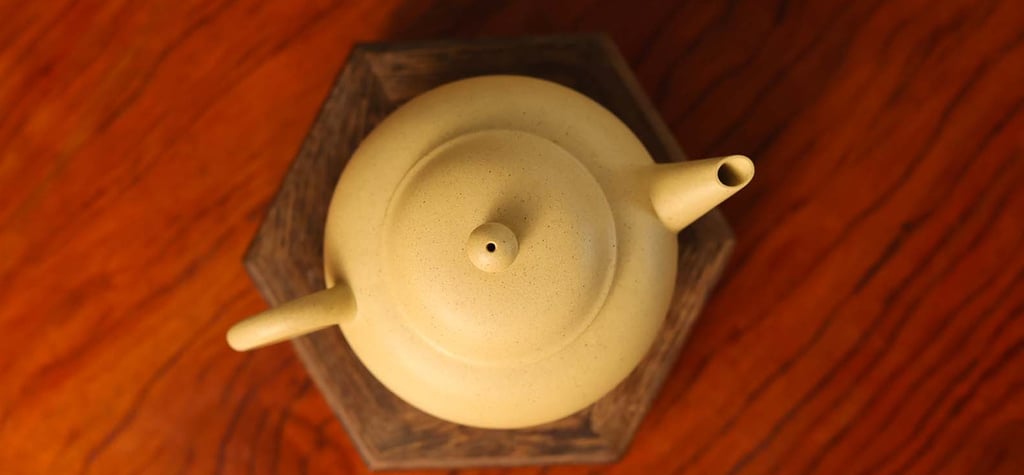How Tea Culture Influences Yixing Teapots
This blog explores how tea culture has influenced the artistry of Yixing teapots. From design innovation to enriched cultural significance, discover how these unique teapots evolved alongside tea traditions.
YIXING TEAPOTSCHINESE TEA CULTURE
Let’s be honest—when most people think of teapots, they picture something basic: a vessel to brew tea. But Yixing teapots? They’re on a whole different level. These aren’t just teapots; they’re art. And the reason they’ve become so iconic has everything to do with tea culture itself.
Over time, as tea drinking transformed from a daily habit into an art form, Yixing teapots evolved alongside it. This article dives into how tea culture has shaped these legendary clay pots—exploring design, functionality, craftsmanship, and cultural meaning.
Exploring the Influence of Tea Culture on Yixing Teapot Artistry
Design Innovation
Here’s the thing: tea drinkers care about aesthetics and function. As tea culture matured, people started expecting their teapots to do more than just hold hot water—they wanted beauty, precision, and style.
Artisans stepped up. Shapes, sizes, and designs of Yixing teapots started evolving. Teapots became more specialised for different tea types, brewing techniques, and even moods. Whether it’s a compact pot for solo sessions or an elegant vessel for ceremonial tea service, Yixing teapots now reflect a level of design innovation directly driven by tea enthusiasts’ needs.
Increased Market Demand
Let’s not dance around it—tea became big business. As tea culture spread, more people craved high-quality, authentic teaware.
Yixing teapots aren’t mass-produced kitchenware; they’re carefully crafted tools. This rising demand pushed artisans to refine their production techniques and create a wider variety of styles. Suddenly, owning a Yixing teapot wasn’t just practical—it was a status symbol for serious tea drinkers.
Enriched Cultural Significance
Tea culture isn’t just about brewing leaves in hot water—it’s steeped (pun intended) in philosophy. Confucianism, Taoism, and Buddhism all play a role in how tea is viewed and enjoyed.
Yixing teapots are a physical reflection of these ideas. Taoist simplicity shines through in the minimal, unadorned designs. Confucian balance is seen in the harmony of form and function. These aren’t just teapots—they’re vessels carrying centuries of cultural wisdom.
Enhanced Functionality
Ask any seasoned tea drinker—they’ll tell you that brewing tea isn’t a one-size-fits-all process. Green tea, oolong, black tea—they all have their own ideal brewing temperatures and conditions.
Yixing clay’s natural porousness makes it perfect for brewing tea. It retains heat exceptionally well, breathes just enough to avoid over-steeping, and enhances the flavours over time as the clay absorbs tea oils.
Tea enthusiasts demanded precision, and Yixing artisans delivered.
Educational Outreach
Let’s face it—not everyone understands why someone would pay top dollar for a teapot. But thanks to the rise of tea workshops, online education, and global tea festivals, more people are discovering the magic behind Yixing teapots.
It’s no longer just about “having a fancy teapot”—it’s about appreciating the craftsmanship, history, and cultural importance behind every curve and handle.
Plus, as traditional Chinese tea sets (often including Yixing pots) gain popularity worldwide, they’re bringing this ancient art form to modern tables.


FAQs About Yixing Teapots and Tea Culture
1. What makes Yixing teapots unique?
Yixing teapots are crafted from special purple clay (zisha), which enhances tea flavour, retains heat exceptionally well, and becomes “seasoned” over time with repeated use.
2. Why are Yixing teapots so connected to tea culture?
Tea culture emphasises mindfulness, aesthetics, and precision—all qualities embodied in Yixing teapots’ design and function.
3. Can you use one Yixing teapot for different types of tea?
It’s generally not recommended. The clay absorbs tea oils, so it’s best to dedicate one teapot to one type of tea (e.g., oolong, green, black).
4. Are Yixing teapots worth the investment?
Absolutely. A well-made Yixing teapot isn’t just a brewing tool—it’s a piece of art that can last generations if properly cared for.
Conclusion
Tea culture and Yixing teapots are inseparable. From design innovation and growing market demand to cultural richness and enhanced functionality, every aspect of these teapots has been shaped by tea enthusiasts’ evolving tastes and expectations.
As tea culture continues to grow worldwide, Yixing teapots will remain at the heart of the experience—timeless, functional, and deeply meaningful.
If you’re curious to learn more about tea culture and the world of teaware, our blog is packed with insights you won’t want to miss.


